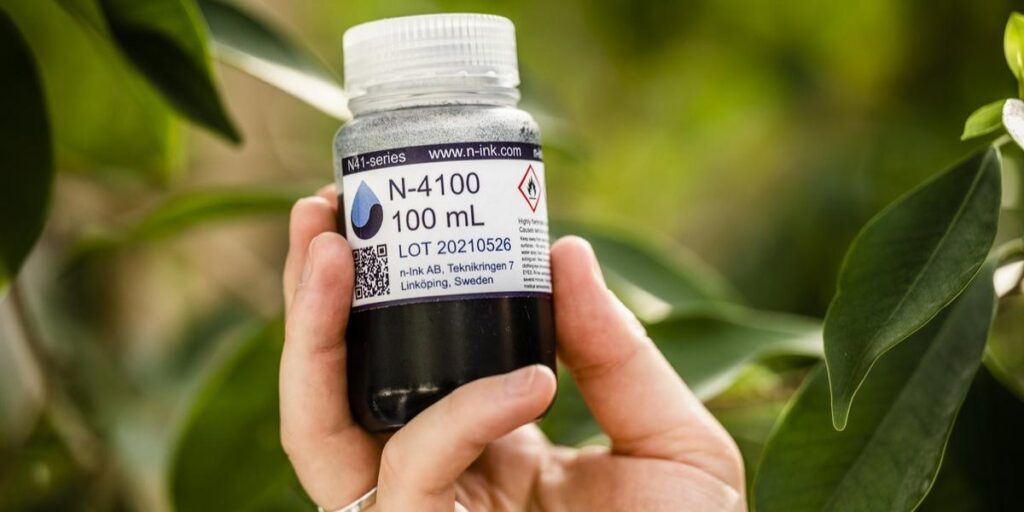N-Inkt, a spin-off from the Linköping University, has developed conductive inks that can be used in the cargo-sextraht layer of organic solar cells and in transport layers of perovskite solar cells.
Swedish Startup N-Inkt has launched N-type conductive ink that can be used in the load-extracting layer of organic solar cells (OPT), as well as in transport layers of perovskite solar cells.
The company offers three formulations of its ink, of which it notes, has a high electrical conductivity, from 0.01 s/cm to 3000 s/cm and thermal stability. It is said that it can be tested of 24 hours at 200 ° C and 1 hour at 350 ° C in nitrogen.
“In the past, N-type polymers were never able to achieve the performance and scale that were achieved with P-Type polymers,” said Marc-Antoine Stoeckel, N-Ink Coo and co-founder, said PV Magazine. “Now we have developed a polymer-based N-type ink that has the electrical conductivity and energy that is needed for inside and outside PV.”
In addition to performance and handling benefits, the N-Ink material has various other benefits. “It makes a fully printed PV process possible. It is alcohol or water-based, a halogen-free and environmentally friendly precursor, “said Stoeckel, and noted that it has potential to lower the PV production costs, while it offers the benefits of polymer material, such as flexibility.
The company has various research projects with PV industrial partners in Europe.
It is also a member of the Sunrey Consortium, a research project funded by Horizon Europe with 13 partners who work on processes and materials to manufacture highly efficient, lead -free perovskiet devices.
“We are also working on inks for the condenser market and offer a polyfluoralkyl-free (PFAS-free) alternative for use in lithium-ion battery research,” said Stoeckel.
“Tailor-made formulations for OPP and Perovskiet solar cells can be ordered directly from the website,” said Stoeckel.
A spin-off from the Laboratory of Organic Electronics, Linköping University, N-Ink was founded in 2020 and has so far raised a total of € 2 million ($ 2.06 million).
The conductive ink technology based on BBL: Pei, shortly before Poly (benzimidazobenzofenanthroline): Poly (Ethyleneimine), is described in “An N-type polymer ink with a high conductivity for printed electronics”Published in 2021 in nature.
This content is protected by copyright and may not be reused. If you want to work with us and reuse part of our content, please contact: editors@pv-magazine.com.

